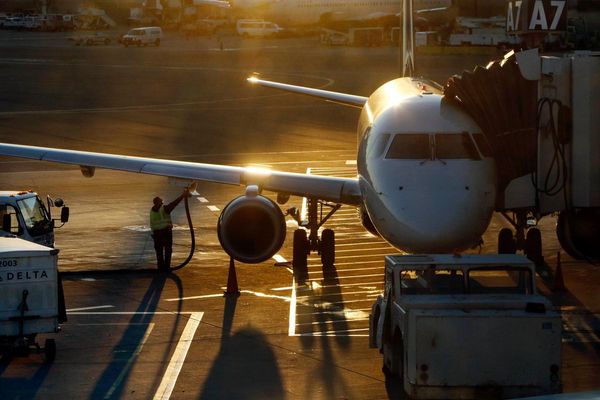
A classic road trip can deliver all the ingredients for the ultimate holiday: freedom, adventure and unlimited carpe diem delights. However, combine two epic routes together – the Causeway Coastal Route in Northern Ireland with Ireland’s Wild Atlantic Way – and you’ll double up on unique attractions, incredible foodie stops and the most soul-soothing of landscapes. In fact, it’s little wonder that driving the highlights of these routes, from basalt cliffs to seaside saunas and from secret beaches to a legendary city, can have long-lasting wellness benefits too.
“An open-road holiday adventure can have immense mental health benefits,” says Donegal-based psychotherapist and mental wellness expert Roxane Mullen. “That sense of anticipation when road tripping, getting in touch with nature, and broadening your perspective through new experiences, are all proven ways of boosting mood and enhancing emotional healing and I think the Causeway Coastal Route and Wild Atlantic Way are the perfect settings to do just that.”
So what are you waiting for? Here is our highlight by highlight road-trip guide featuring my top recommendations to eat, stay and play along the way.
The Gobbins cliff path, County Antrim. Photograph: Dillon Osborne
Stage 1: Carrickfergus to Bushmills
You may have plenty of miles of road ahead of you, but this road trip takes legendary status at the official starting point of the Causeway Coastal Route in Carrickfergus, home to a stunning 12th-century Norman castle. Beyond it, your journey continues north through scenic coastline flanked by the lush Glens of Antrim, where the romantic village of Cushendun and the spectacular Torr Head make for Instagram-perfect photo stops.
Between the mainland and Scotland, keep an eye out for Rathlin Island, the island of Ireland’s northernmost inhabited offshoot, which makes for a colourful excursion; not least as it’s home to no less than three lighthouses (one of which is upside down!) plus a lively puffin colony. Back in the friendly town of Ballycastle, the Ballycastle Traditional Music Trail takes you through the best local watering holes, while guided by talented musicians.
The cliffs above the Giant’s Causeway, County Antrim (top). Photograph: Kyle Brickley; Carrick-a-Rede rope bridge, County Antrim (below). Photograph: Rob Durston/Tourism Northern Ireland
Where to stay: a self-catering stay at Blackhead Lighthouse near Carrickfergus is a coastal dream, while there’s no more characterful break along the coast than the Bushmills Inn – it’s one of the oldest hotels around, having been a coaching inn as far back as the 1600s.
Must-see and do: to see the Gobbins cliff walk from a different perspective, try a stand-up paddleboarding trip with Islandmagee SUP. Crossing the one-of-a-kind Carrick-a-Rede rope bridge takes your road trip to new heights.
The Giant’s Causeway, County Antrim. Photograph: Getty Images
Stage 2: Giant’s Causeway to Derry~Londonderry
The Causeway Coastal Route is dotted with star attractions, but this leg of the tour features the legendary blockbuster that is the Giant’s Causeway. Tip? Arriving at the Unesco world heritage site for sunrise (or indeed sunset) when its hexagonal basalt columns shimmer by the surf and light, is truly mesmerising. Back on the road, chase the sun north-west and you’ll find a coast gilded by the shores of Portrush, Portstewart and Benone beaches, all of which make enticing pitstops. In the latter, Hotbox is an authentic Finnish sauna and soothing spot to refresh after a wild Atlantic plunge. It has the added bonus of having the iconic Mussenden Temple as a backdrop and you can admire it with a walk along the seven-mile stretch of beach.
Next up, the ever-vibrant city of Derry~Londonderry brings some urban flavour to your road trip. The history-steeped town holds the distinction of being the island of Ireland’s only fully walled city – the 1.5 km of walls were a 17th century addition to protect the inhabitants and you can get a good idea of the original town from the walkway. A guided tour with Martin McCrossan City Walking Tours offers a friendly and fascinating insight into the city’s storied past and dynamic present. Bearings gathered, uncover attractions from the Museum of Free Derry to The Derry Girls Experience at the Tower Museum – a must-visit for lovers of the iconic series (or simply 90s nostalgia!).
Hotbox on Benone beach, County Londonderry. Photograph: Dillon Osborne
Where to stay: Derry~Londonderry’s newest hotel and spa, the Ebrington, makes for an elegant city base, while Cromore Retreat’s luxury bubble dome suites allow you to sleep under the stars.
Where to eat and drink: the Walled City Brewery is a happening spot to eat and drink in Derry~Londonderry, while Harry’s Shack at Portstewart Strand is a vibe all of its own for seafood and sundowners.
Must-see and do: pick up locally made souvenirs at the Craft Village, tucked within the city’s old town. Along the Causeway coast, Dunluce Castle makes for a phenomenal photo-stop.
The northern lights. Photograph: Tourism Ireland
Stage 3: Malin Head to Glenveagh national park
With Derry~Londonderry and the Causeway Coastal Route in your rearview, steer onwards to County Donegal where you’ll join the epic Wild Atlantic Way for the next stage of your adventure. The island’s profusion of peninsulas make for enticing touring shoot-offs. There’s Fanad, famed for its beautiful lighthouse, and Malin Head on Inishowen, Ireland’s most northerly point, where you can bask in long summer nights or luck out with a display of northern lights activity.
To ramp up the great escape even more, immerse yourself in island life with a visit to Arranmore, Tory or Gola islands or to get active, kayak along their crystal clear coasts – keep an eye out for basking sharks that regularly fish in the waters. Continuing south, take a timeout at the spectacular Glenveagh national park, an unbridled hikers’ paradise, where you ramble through valley routes as golden eagles soar above you.
Dolphins at Malin Head, County Donegal (top); Wild Alpaca Way, County Donegal (below) offers hiking outings. Photographs: Gareth Wray
Where to stay: Lough Mardal’s glamping yurts make a colourful base in nature, while Harvey’s Point hotel at Lough Eske is a hallmark in Irish hospitality.
Where to eat and drink: tuck into seafood and chowder to wow at Nancy’s Barn in Ballyliffin, while Olde Glen Bar & Restaurant is a delicious, Michelin Guide gem.
Must-see and do: meet bears and wolves at Wild Ireland; a refuge for some of Ireland’s former native species, while for a more domesticated brush with nature, Wild Alpaca Way offers hiking outings, where you’ll be accompanied by your own biddable alpaca.
Surfing at Strandhill beach, County Sligo. Photograph: Brian Morrison
Stage 4: Sliabh Liag to Strandhill
County Donegal is renowned for its dramatic landscapes – and seascapes – and they don’t get more awesome than at Sliabh Liag (Slieve League), one of Europe’s highest sea cliffs which, at a staggering 600 metres, is an epic spot to catch – or lose – your breath at. Inhale the epic scenes from the magnificent viewing platform or get up close with their towering face aboard Sliabh Liag Boat Tours.
Continue south to neighbouring Leitrim; and while the county may be home to Ireland’s shortest coastline (not quite 2.4 miles!) that belies a trove of undiscovered treasures, not least Glencar waterfall, which you’ll find cascading over a backdrop of lush native rainforest with a cinematic magic.
Your Wild Atlantic Way journey finally brings you to County Sligo – meaning place of shells in Irish, as well as being “Yeats country” on account of the stunning landscapes that so inspired the poet – which makes an invigorating base to crescendo any coastal road trip. As Ireland’s unofficial surfing capital, Sligo’s beaches are the perfect setting to unleash your adventurous side and Strandhill is home of the National Surf Centre and its three surf schools, which offer lessons for all levels. Reward yourself and recoup your energy at Hooked in Sligo Town. It’s nothing to do with fishing – the restaurant name comes from the hooks in a traditional butcher’s shop. That said, as well as fine meats, locally caught seafood is on the menu and it does a good line in breakfast and brunch.
Sliabh Liag cliffs, County Donegal, from the water. Photograph: Tristan Hutchinson/Failte Ireland
Where to stay: the Address in Sligo town makes an excellent-value boutique base; in Donegal, Lough Eske Castle makes a fairytale luxury escape.
Where to eat and drink: taste the best of local produce with Sligo Food Trail or check out some Donegal whiskey at Crolly Distillery.
Must-see and do: step back in time at Glencolmcille folk village, if you’re brave, climb sea stacks, or soak in the sweeping panoramas at Mullaghmore Head.
Discover more at Ireland.com







